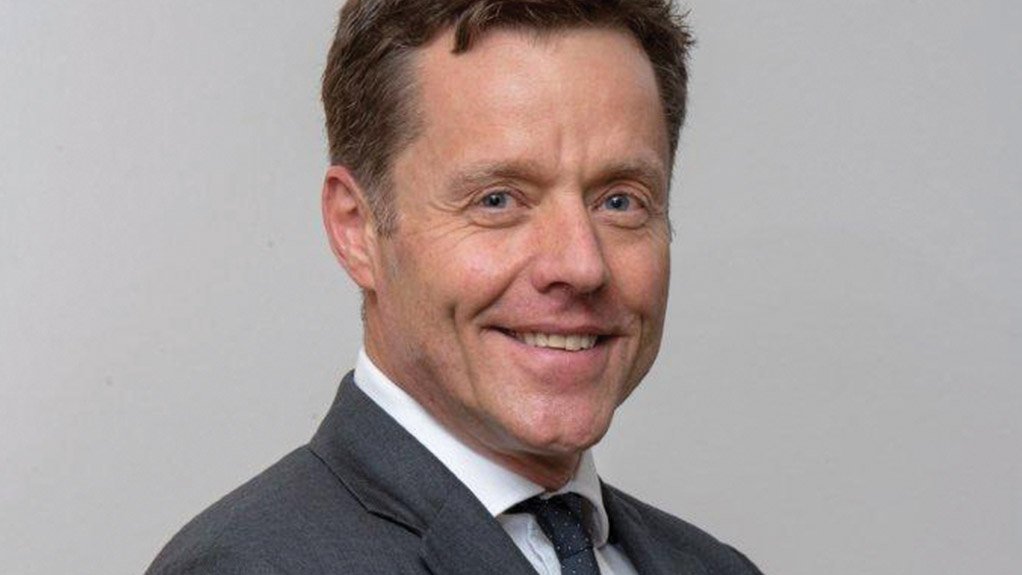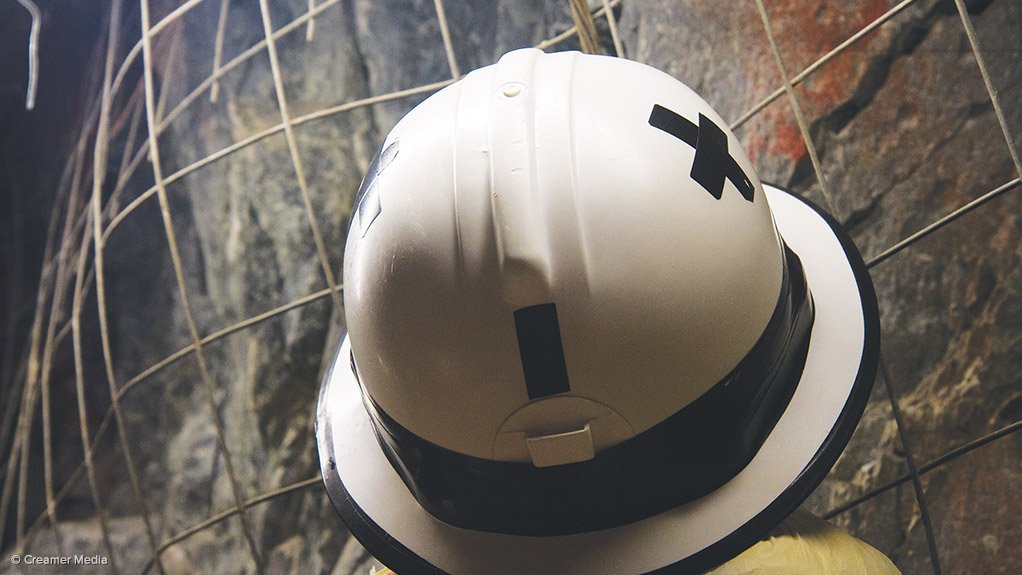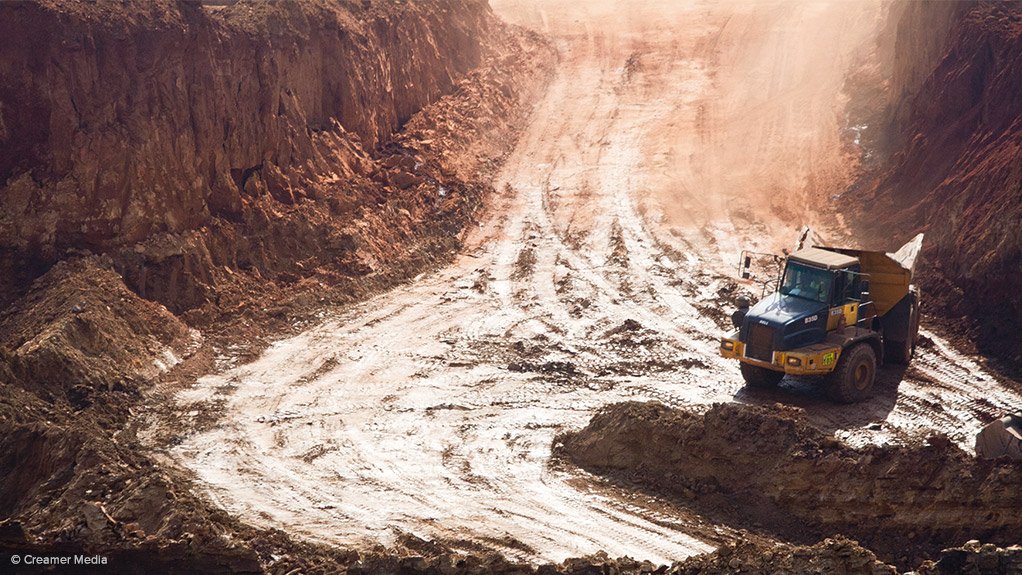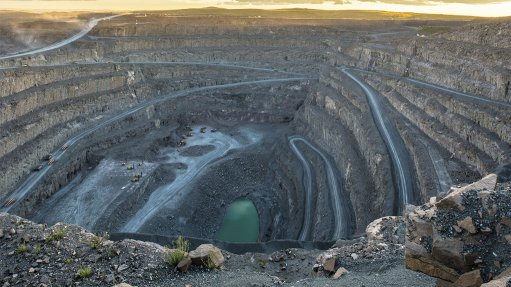South Africa must maintain relevance in global mining sector
It is important that South Africa remain an integral player in the global mining sector to attract investors worldwide during the current constrained market environment, financial services provider Barclays Africa Group tells Mining Weekly.
Barclays Africa head of mining Craig Brewer explains that the country can enhance its position by ensuring South Africa is an attractive inward investment destination and facilitating the entrance of global mining companies and investors. This will increase foreign equity investment opportunities and assist in efforts to raise capital for development projects.
The group, which is 62.3% owned by British multinational banking and financial services company Barclays Bank, assists clients across Africa by advising them on the mining sector and where opportunities may be and, importantly, introducing them to global investors to enhance connectivity and ensure that local companies remain relevant to global investors.
As such, Barclays Africa held an equity and investment programme in Cape Town in conjunction with last monthís Investing in African Mining Indaba, where it brought together mining corporates and institutional investors to engage on a wide range of topics and allow mining companies to road show their investment thesis.
Some of these discussions raised issues such as the availability of funding, the involvement of government and regulators in the sector, funding issues with junior miners and the approach of business and government to continued declining commodity prices. Importantly, from an investor perspective the question of whether this is the right time to acquire mining operations in Africa was asked.
Brewer notes, however, that investors will remain extremely cautious until it is clear that the reversal of the super cycle has bottomed out. The super cycle was driven by the growth out of China, which carried the global mining industry upward, and now with the lower growth rates being seen in China and globally, the question is, how close is the sector to the bottom.
Brewer notes that this yearís Mining Indaba, held from February 8 to 11, indicated that a sense of realism had set in amongst all participants regarding the state of the local and global mining industry, spurring the need for greater engagement between government and industry to resolves the uncertainty in South African mining.
Barclays Africa asserts that government and industry need to find a balance between retaining employment and ensuring the sustainability of the mining sector. Shuttering of mines that are not economically viable and too far up the cost curve in this new commodity cycle will reduce supply and in time, place upward pressure on commodity prices which will then ensure a sustainable mining sector and attract foreign investment, which is critical to the country. Based on statistics from the Chamber of Mines (CoM), mining creates one-million jobs ñ 500 000 direct and 500 000 indirect jobs ñ in South Africa.
'I donít believe there will be any real improvement in the commodity price cycle for a while and, as such, there will be a continual focus on cost reduction. A large proportion of South African mines are high-cost owing to companies expanding and building new mines at the upper end of the super cycle and with hindsight, these mines should never have been built considering current commodity prices. Apart from the improvement in the gold price over the last couple of months, having regained its safe haven status, and the benefit of rand weakness, there are limited signs on the horizon of any catalyst that could materially improve the commodity environment in South Africa,' says Brewer.
He advises that in the future, Africa, in particular, needs to be much more alert to commodity cycles, as the continent was unprepared for the commodity super cycle and did not necessarily benefit as much as it could have. Although mining has reduced its contribution to South Africaís gross domestic product (GDP) over the years, Brewer notes that mining will maintain its relevance, both as a direct contribution to GDP, and importantly, in the form of direct and trickle-down effects.
The CoM notes that mining accounts for about 18% of South Africaís GDP ñ 8.6% direct, and 10% indirect and induced.
'What is important, is that with companies urgently needing to deleverage and restore their balance sheets without resorting to capital calls to shareholders, there will be an increase in M&A as companies dispose and exit from noncores. Investors are entering a period when they can acquire high-quality assets at reasonable prices; however, they must be prepared to trim down costs and survive the cycle through a long-term view,' he concludes.
Positives emerging but another tough year for mining
“If the start to 2016 is a forerunner of what is to come, then 2015 will look pedestrian in comparison,” says Michael Rawlinson, Global Co-head of Mining and Metals at Barclays. “Yet there are clear positives that are emerging, particularly in the gold sector.”
The recent run of bad news from a standoff in the Middle East to escalating tensions around North Korea and to the emerging market weakness led by China is dragging commodities and markets to new lows, yet gold may finally be showing its proper safe haven status. Over 2015, gold showed glimpses of its supposed safe haven status but was effectively range-bound and any increase in the gold spot price in the face of increased financial and political risk was transitory. What we are seeing now in the global gold sector is a renewed optimism as
reflected in the marked increase in the share prices of global gold producers.
While other players in the mining sector find themselves under increasing pressure and share prices reflect this pessimism, breaking through multi-year lows, gold producers who have spent the last two years reducing costs and refining portfolios now find themselves in a cash positive environment. With the strong US dollar causing weakness in emerging markets and markets such as Canada and Australia, gold producers in these regions are experiencing a further tail wind in the dollar revenue, local currency cost equation. 'These cash flush gold
producers are now surprisingly facing the decision of having cash to de-lever or possibly even consider a resumption of dividends,' commented Rawlinson.
Any sustained increase in gold prices is dependent on the US and the Federal Reserve and whether its end-of- year interest rate increase will be closely followed by further increases.
It appears that the same does not apply to the platinum sector, primarily as it has not been able to reduce costs over the last couple of years to the degree experienced in the gold sector. This has resulted in the majority of platinum producers finding themselves at the wrong end of the cost curve. The VW emissions saga, recycling, lower growth in Europe and declines in the oil price have all led to weak demand for the platinum group metals basket. Having said that, Sibanye Resources has taken a view on platinum and embarked on two platinum acquisitions in 2016 and much can be expected of the company based on its track record following its unbundling from Gold Fields.
But what about other commodities ñ is there any respite?
Comments
Press Office
Announcements
What's On
Subscribe to improve your user experience...
Option 1 (equivalent of R125 a month):
Receive a weekly copy of Creamer Media's Engineering News & Mining Weekly magazine
(print copy for those in South Africa and e-magazine for those outside of South Africa)
Receive daily email newsletters
Access to full search results
Access archive of magazine back copies
Access to Projects in Progress
Access to ONE Research Report of your choice in PDF format
Option 2 (equivalent of R375 a month):
All benefits from Option 1
PLUS
Access to Creamer Media's Research Channel Africa for ALL Research Reports, in PDF format, on various industrial and mining sectors
including Electricity; Water; Energy Transition; Hydrogen; Roads, Rail and Ports; Coal; Gold; Platinum; Battery Metals; etc.
Already a subscriber?
Forgotten your password?
Receive weekly copy of Creamer Media's Engineering News & Mining Weekly magazine (print copy for those in South Africa and e-magazine for those outside of South Africa)
➕
Recieve daily email newsletters
➕
Access to full search results
➕
Access archive of magazine back copies
➕
Access to Projects in Progress
➕
Access to ONE Research Report of your choice in PDF format
RESEARCH CHANNEL AFRICA
R4500 (equivalent of R375 a month)
SUBSCRIBEAll benefits from Option 1
➕
Access to Creamer Media's Research Channel Africa for ALL Research Reports on various industrial and mining sectors, in PDF format, including on:
Electricity
➕
Water
➕
Energy Transition
➕
Hydrogen
➕
Roads, Rail and Ports
➕
Coal
➕
Gold
➕
Platinum
➕
Battery Metals
➕
etc.
Receive all benefits from Option 1 or Option 2 delivered to numerous people at your company
➕
Multiple User names and Passwords for simultaneous log-ins
➕
Intranet integration access to all in your organisation

























